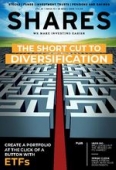Archived article
Please note that tax, investment, pension and ISA rules can change and the information and any views contained in this article may now be inaccurate.
‘What tax charge will I face at 75 in relation to the lifetime allowance?’

I am 64 years old and understand that on attaining 75 there is a compulsory tax charge (triggered by what I understand is called a ‘benefit crystallisation event’) in relation to the lifetime allowance.
But what type of tax is liable? Is it income tax or a 55% penalty? I also have 75% of my fund crystallised and 25% uncrystallised – will that make any difference?
Rory
Tom Selby, AJ Bell Senior Analyst says:
First of all there are a few bits of jargon in there that it’s worth unpicking.
The lifetime allowance is the amount you can save tax-free over your lifetime in a pension. This limit is currently set at £1,055,000 and rises annually
in line with Consumer Prices Index (CPI) inflation.
A ‘benefit crystallisation event’ is simply the point at which HM Revenue & Customs ‘tests’ how much lifetime allowance you have used.
If your fund is ‘crystallised’ it means you have picked a retirement income route (e.g. annuity or drawdown) and most likely taken 25% of the pot as tax-free cash. If your fund is ‘uncrystallised’ you haven’t yet done this.
It is possible to crystallise part of your pot if you don’t want to take all your tax-free cash at once. You can also take ad-hoc lump sums (known as UFPLS), with 25% of each withdrawal tax-free.
UNDERSTANDING THE LEVEL OF LIFETIME ALLOWANCE
Once you pick a retirement income path for some or all of your pension pot, the amount of lifetime allowance available will be reduced by the value of the pot you ‘crystallise’.
For example, if someone age 64 with a £1m fund decides to crystallise everything and enter drawdown, they might take 25% as tax-free cash (£250,000) and use the remaining £750,000 to provide a retirement income.
Because the lifetime allowance is linked to inflation and therefore changes over time, the amount someone uses is expressed as a percentage to two decimal places – 94.78% in this case.
As you suggest in your question, a benefit crystallisation event also occurs when you reach age 75, regardless of whether or not you’ve decided how you want to use your remaining fund.
So if in the above example the individual takes no more withdrawals but their remaining pot grows to £1.3m by their 75th birthday, £550,000 of this would be tested against the lifetime allowance (£1.3m minus the £750,000 that was put into drawdown).
Assuming CPI inflation has increased at 2.5% per year, the lifetime allowance could be £1,385,000 by the time our saver reaches age 75. However, because they have already used some of their lifetime allowance, the remaining allowance is worth £72,297 (5.22% of £1,385,000).
The level of the lifetime allowance charge depends on what you choose to do with the excess. If you take the excess as a lump sum before age 75 it will be taxed at 55%. If you leave it in the scheme or wait until age 75 it will be taxed at 25% with subsequent withdrawals subject to income tax.
So in the above example the excess at 75 is £477,703 (£550,000 minus £72,297) and the tax charge is a whopping £119,426.
NO NEAT TRICKS
Sadly there aren’t any neat tax tricks you can use to avoid this charge. However, it is worth seeing if you can apply for fixed or individual protection, which could allow you to lock in to a lifetime allowance of up to £1.25m at the moment.
You can read more about the terms and conditions of these protections here.
It is also worth thinking about how you want to withdraw the money and the impact this could have on your tax position.
For example, making some withdrawals in retirement could mean that there is less in your fund to be tested against the lifetime allowance at 75.
However, if your priority is leaving money to loved ones after you die pensions provide an extremely tax efficient environment in this regard.
If you were to die before aged 75 your fund can be passed on free of tax, while if you die after 75 it will be taxed in the same way as income – but only when your beneficiary chooses to make a withdrawal.
Navigating the lifetime allowance is one of the more complicated areas of pensions, so if you’re at all unsure it’s worth considering paying a financial adviser who can provide personal recommendations based on your individual circumstances.
DO YOU HAVE A QUESTION ON RETIREMENT ISSUES?
Send an email to editorial@sharesmagazine.co.uk with the words ‘Retirement question’ in the subject line. We’ll do our best to respond in a future edition of Shares.
Please note, we only provide guidance and we do not provide financial advice. If you’re unsure please consult a suitably qualified financial adviser. We cannot comment on individual investment portfolios.
Important information:
These articles are provided by Shares magazine which is published by AJ Bell Media, a part of AJ Bell. Shares is not written by AJ Bell.
Shares is provided for your general information and use and is not a personal recommendation to invest. It is not intended to be relied upon by you in making or not making any investment decisions. The investments referred to in these articles will not be suitable for all investors. If in doubt please seek appropriate independent financial advice.
Investors acting on the information in these articles do so at their own risk and AJ Bell Media and its staff do not accept liability for losses suffered by investors as a result of their investment decisions.

 magazine
magazine








